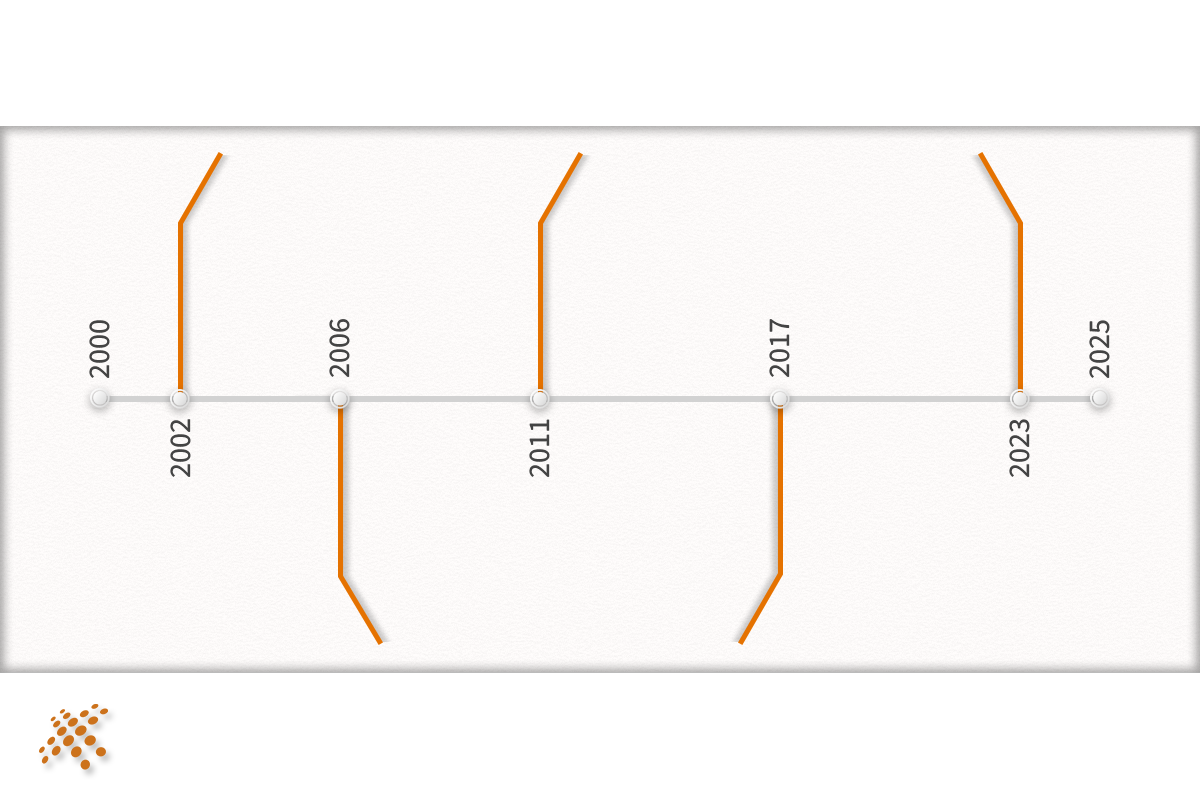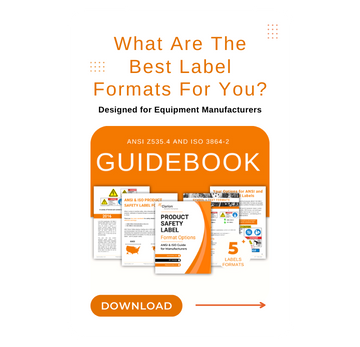Ever wondered why safety information in product manuals can sometimes feel overwhelming or confusing? There's a reason for that, and there's also a solution brought by standardization. The American National Standards Institute (ANSI) has developed a set of standards, including ANSI Z535.6, to promote clear and consistent hazard communication in product manuals and other collateral materials.
What is ANSI Z535.6?
This specific standard focuses on ensuring safety information in manuals, user guides, instructions, maintenance or service manuals, and safety brochures. It provides a framework for the design and placement of safety messages within these collateral materials.
Why was ANSI Z535.6 Developed?
Previously, ANSI Z535.4 addressed safety signs and labels on physical products. These labels are concise and serve as immediate visual cues. Collateral materials, however, presented a different challenge. They require a more in-depth approach to safety communication compared to concise labels. They may contain complex procedures, troubleshooting steps, and warnings that necessitate a more nuanced safety message format.
Recognizing this gap, ANSI created Z535.6 to establish a communication system specifically designed for safety information in manuals and instructions. Z535.6 complements Z535.4 and other ANSI standards to create a comprehensive safety communication strategy across physical products and their accompanying materials.
A Look at the Standard's Development and Revisions
The development of ANSI Z535.6 reflects the ongoing effort to improve safety communication. Here's a timeline of its development and revisions:

ANSI Z535.6 Standard Timeline
Recognition of Need
ANSI Z535.6 - First Edition
First Revision
Standard Reaffirmed
Latest Implementation
2002: Recognition of Need
The ANSI Z535 committee recognized the need for a standard specifically addressing safety information in collateral materials. A subcommittee, ANSI Z535.6, was formed to develop a new standard.
2006: ANSI Z535.6 - First Edition
The first edition of ANSI Z535.6, titled "Product Safety Information in Product Manuals, Instructions, and Other Collateral Materials," was published.
2011: First Revision
The standard underwent its first revision. This revision included:
- Permitting the use of the safety alert symbol within a line of text.
- Harmonizing definitions across the Z535 series for terms like "accident," "harm," and "incident" to differentiate physical injury from other safety concerns like property damage.
2017: Standard Reaffirmation
The standard was reaffirmed, signifying its continued relevance.
2023: Latest Implementation
The most recent revision was implemented in late December. This revision included minor clarifications, such as an expanded definition of "risk" for better comprehension. The German translation of the signal word "Notice" in Annex B was also updated.
How can ANSI Z535.6 be Used?
While the standard doesn't dictate the specific safety messages included in manuals, it offers guidance on formatting them effectively. It categorizes safety messages into four types, as well as provides inside on other design considerations:
1. Categorization of Safety Messages:
The standard categorizes safety messages into four types, allowing for targeted communication based on the level of risk involved:
- Supplemental Directives: Messages that provide context or additional information about other safety messages. For instance, a directive might state, "See (Important Safety Information) section for further details."
- Grouped Safety Messages: These are collected and presented in a dedicated safety information section of the document. This section would typically house general warnings and precautions applicable throughout the product's use.
- Section Safety Messages: Messages relevant to entire sections, subsections, or specific procedures within the manual. For example, a section on battery replacement might include a safety message warning against using incompatible batteries.
- Embedded Safety Messages: Messages that apply to a particular step or instruction within a section or procedure. An example would be a warning label placed directly on a product component mentioned in the disassembly instructions.
2. Message Components:
The standard outlines the key components that should be included in a safety message. These components ensure clarity and comprehensiveness:
- Signal word: This indicates the severity of the potential hazard. ANSI Z535.6 adopts the same signal words as Z535.4 for product safety signs and labels: DANGER (indicates high risk of severe injury or death), WARNING (indicates risk of serious injury), CAUTION (indicates risk of minor or moderate injury), and NOTICE (indicates potential for property damage.
- Signal word: This indicates the severity of the potential hazard. ANSI Z535.6 adopts the same signal words as Z535.4 for product safety signs and labels: DANGER (indicates high risk of severe injury or death), WARNING (indicates risk of serious injury), CAUTION (indicates risk of minor or moderate injury), and NOTICE (indicates potential for property damage.
3. Design Considerations:
ANSI Z535.6 emphasizes the importance of clear and consistent design to enhance readability and comprehension. This includes using easy-to-read fonts, appropriate font sizes, and sufficient spacing between text elements.
- Safety Alert Symbol: This graphical symbol is another element adopted from Z535.4. It complements the signal word and serves as a visual cue to draw attention to safety information.
- Hazard Description: The message should clearly describe the potential hazard, avoiding technical jargon. Simple and concise language is crucial for user understanding.
- Consequences of Non-Compliance: The message should outline the potential consequences of failing to follow the safety instructions. This reinforces the importance of adhering to the safety guidelines.
- Precautionary Measures: The core of the safety message lies in outlining the steps users should take to avoid the hazard. These measures should be specific, actionable, and easy to follow.
- Pictograms: The standard allows for the use of pictograms to visually represent hazards. Pictograms can be particularly helpful when dealing with a multilingual audience or when users have varying literacy levels.
Benefits of Implementing ANSI Z535.6
By following ANSI Z535.6 guidelines, manufacturers can create user manuals and instructions that are easier to understand. This can lead to several significant benefits:
- Improved Product Safety: Clear and well-formatted safety information empowers users to handle products safely and reduces the risk of accidents and injuries.
- Reduced Liability: Following a recognized safety standard like ANSI Z535.6 demonstrates a manufacturer's commitment to user safety. This can help mitigate potential liability issues in case of product-related accidents.
- Enhanced User Experience: Easy-to-understand manuals lead to a more positive user experience. Users feel more confident and in control when they can readily access and comprehend safety information.
- Global Market Accessibility: ANSI Z535.6 aligns with international safety communication standards like ISO 20607. This can simplify compliance efforts for manufacturers targeting a global market.
Working Towards a Safer Future with ANSI Z535.6
ANSI Z535.6 plays a crucial role in promoting clear and consistent safety communication in product manuals and instructions. By following this standard's guidelines, manufacturers can create user-friendly materials that empower users to handle products safely. This not only benefits user safety and reduces product liability risks but also contributes to a more positive user experience when handling instructional materials.
By embracing safety standards like ANSI Z535.6, we can work towards a future where product safety is not a matter of chance but a result of clear and effective communication. If you would like a second opinion on your machinery user manuals or are seeking input on creating one, reach out to our team of professionals for assistance with our manual audit services.

